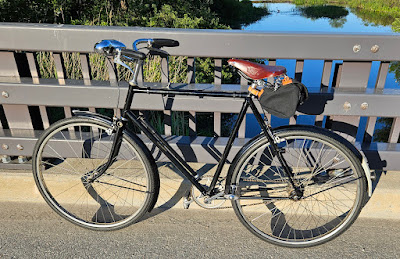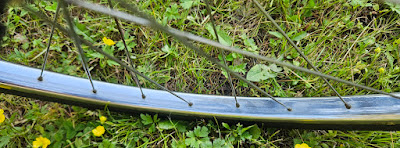A recent article and a few observations...
I saw a local news article discussing electric bicycles on bike and multi-use pedestrian trails.
Electric bicycles certainly have a proper time and place for use by the public. Electric bicycles, for example, can help older or disabled people to pedal a bicycle. They can help all riders to go up steeper hills, which are common in some parts of the USA.
However as bicyclists, I think we need to differentiate between electric bikes that assist riders to pedal and ride as a traditional bicycle would go, versus machines that amount to ersatz motorcycles. Pedal-assist electric bikes that travel at speeds comparable to a traditional bicycle should be allowed on bike trails. Electric bicycles capable of traveling at speeds comparable to a motor vehicle without any pedaling do not belong on bike and multi-use pedestrian trails.
Many trails have a 10 to 15 miles per hour speed limit. Traditional bikes and pedal-assist electric bikes can exceed those speeds, but there is the degree of offense is far worse when we see an electric bike hauling along at 25 or 30 miles per hour, all while the rider does not have to pedal at all.
Sometimes we lump electric bicycles and traditional bicycles into two large groups. In reality, I think we need to differentiate between electric bikes where the motor assists the rider to pedal in a traditional way, versus an electric motor that converts the machine to what basically amounts to a light grade motorcycle. We wouldn't want a Honda or a Harley Davidson on the bike trail, so why allow an electric bicycle doing basically the same kind of thing?
Food for thought on a warm, humid Monday afternoon...





































